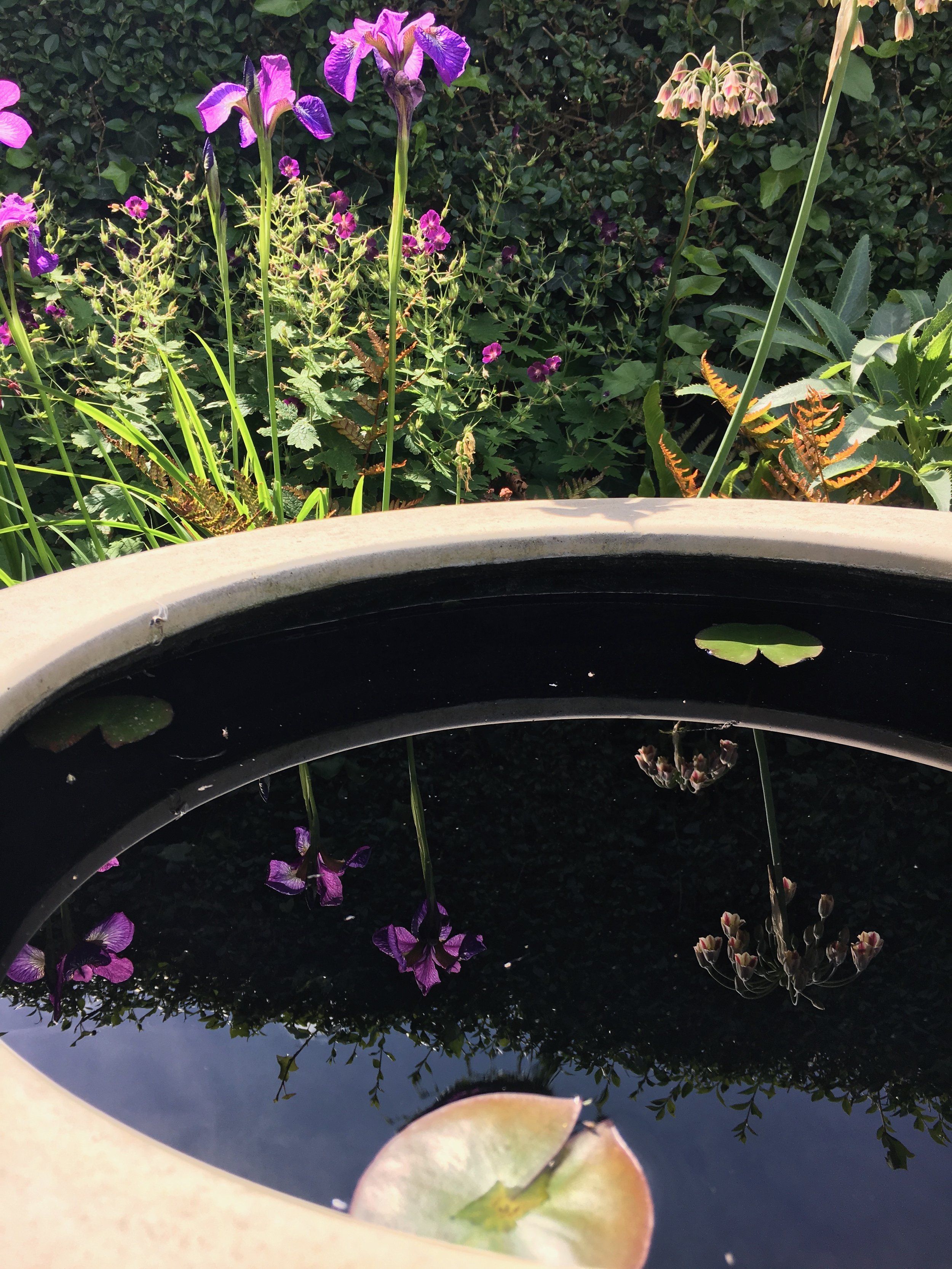The Expert Guide: Types Of Water Feature For Your Garden
There are many benefits to including water in your garden design. A water feature becomes a focal point, it can increase biodiversity, and it will create a sense of calm and relaxation within your outdoor space.
There are also many options when considering water features, especially if you are lacking space or you are not keen on the idea of a traditional pond (and the maintenance that they can require).
Here we take a look at types of water feature for any garden, no matter your space, time or maintenance constraints.
A Pondless waterfall
If space is tight, or you do not want the additional task of maintaining a pond, waterfalls can still be created with a simple system that re-circulates water from an below-ground reservoir. Artfully using rocks and gravel to form a cascading waterfall can create a pleasing feature but there are many solutions that can be purchased.
With a little creativity, pondless waterfalls can be used to form a wonderfully biodiverse area with moisture loving plants that will attract even more wildlife to your garden. By forming small pools that overflow and cascade down, you might create little areas for visitors – most notably you will find that birds will enjoy drinking and bathing among the rocks.
Alternatively, in a more contemporary garden, a waterfall blade (often in stainless steel) will create a curtain of water which can re-circulate from a sunken reservoir. This creates more sound than the gentle cascade of a waterfall over rocks, although care must be taken to set up correctly to ensure that water does not bounce into the surrounding area as this rapidly empties the reservoir.
Fountains
Traditional fountains are synonymous with grandeur. However, modern garden fountains come in all shapes and sizes, suitable for any taste or style.
Small, modest fountains can sit subtly among your beds to create a surprising feature to satisfies the desire for the sound of water flowing. Alternatively, a larger fountain is much better suited as a key focal point.
Many small fountains are self-contained, and some are solar powered, meaning they are easy to install and do not need additional plumbing - they may not be guaranteed for a long life however. Also a small amount of maintenance will be needed though to ensure your fountain remains topped up though and in working order. Again these types of feature can attract wildlife into your garden.
Contemporary and unique water features
If you wish to make more of a statement with your water feature, something a little more contemporary can create a stunning focal point. The UK boasts many contemporary artists, blacksmiths and sculptors who specialise in creating unique water feature pieces. A little research will help you find one suited to your taste and budget.
A modern art-piece water feature will not only draw the attention, but it can create a perfect focal point, especially when juxtaposed against a naturalistic planting. In fact, starting your garden design with a statement water feature may help to dictate the feel and design of your garden.
A simple reflective body of water in a beautiful pot, possibly with black dye to create a mirrored effect, can also create a bold statement - don’t forget though to include a dwarf water lily…indeed small pots can be filled with appropriate pond plants to create a fascinating talking point (and a landing pad for damselflies).
Oriental style water feature
Orientally inspired garden design is hugely popular across Europe, not least because of the focus on simplicity and tranquillity. Japanese Zen gardens were traditionally created by Buddhist monks to show reverence for nature with water playing a key part - although sand and gravel would be used to represent water by using a rake to create a rippling effect.
A small orientally inspired water feature, such as a bamboo fountain or serenity cascade feature, which create a subtle trickling effect, is all you need. These types of water features are best suited to minimalist, contemporary gardens that are designed to calm the mind – not overpower the senses.
A Traditional Garden Pond
Finally a traditional pond consists of a liner (with a fleece underlay - although older books will advise the use of sand around the bottom to cover sharp stones instead) and different pond levels - one of which should be a depth of 60cm or greater to allow fish and other wildlife to overwinter in the case of ice. Differing levels allow aquatic plants to be sited - although you must ensure that the depth matches the plant’s requirements.
The challenge to any traditional pond is to make it look natural though - especially in a traditional or country garden. Many garden ponds are surrounded by stones and pebbles to hide the liner’s edge and these should ideally be locally sourced to look natural on the site. Alternatively grass can marry with the pond edge (although care must be taken when cutting the lawn to keep clippings out of the pond), or you can instead have a cantilevered deck hiding the liner’s edge in shadow. Also a pond should mirror real life and always be at the lowest point of a garden so as not to look unnaturally positioned.

